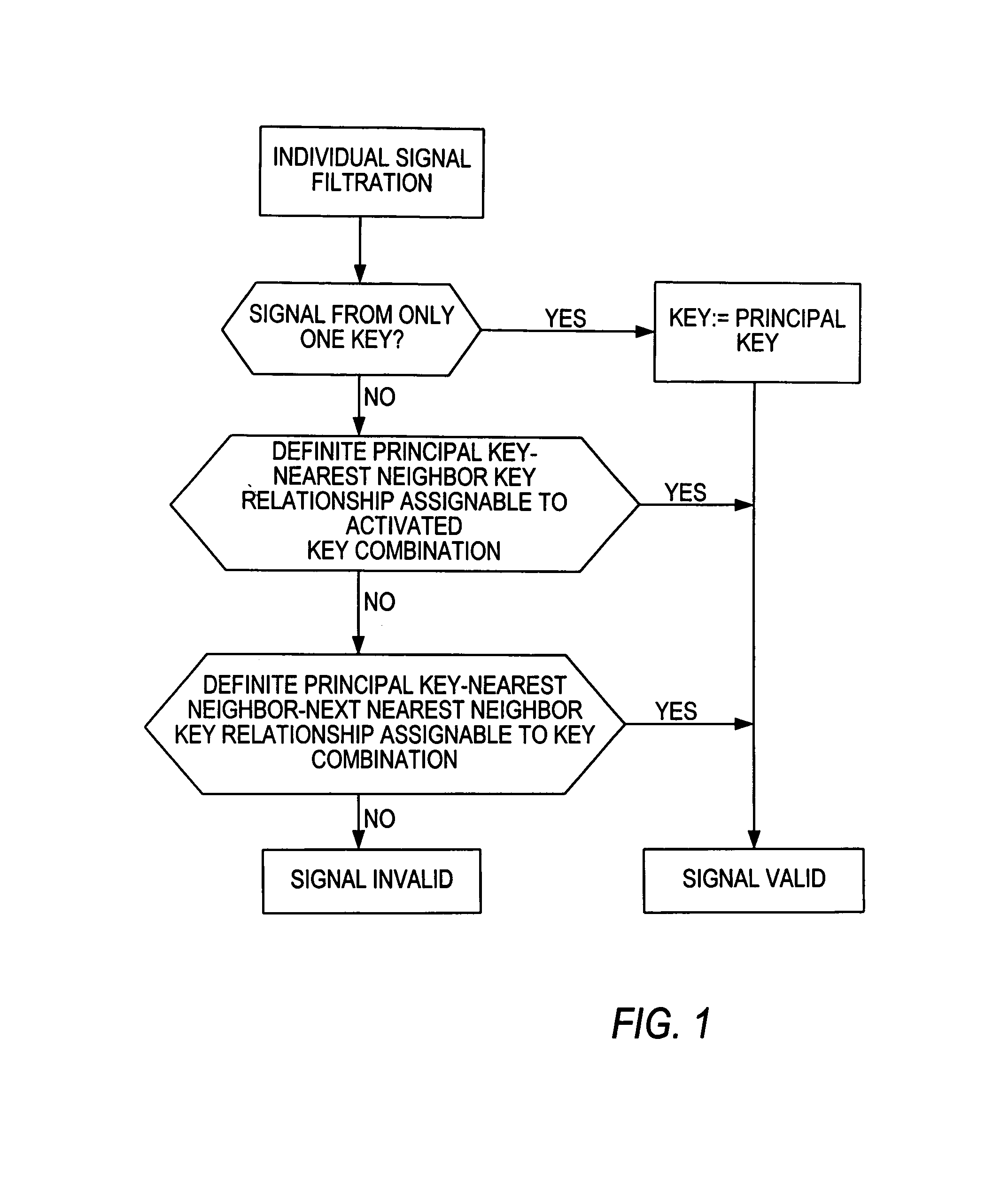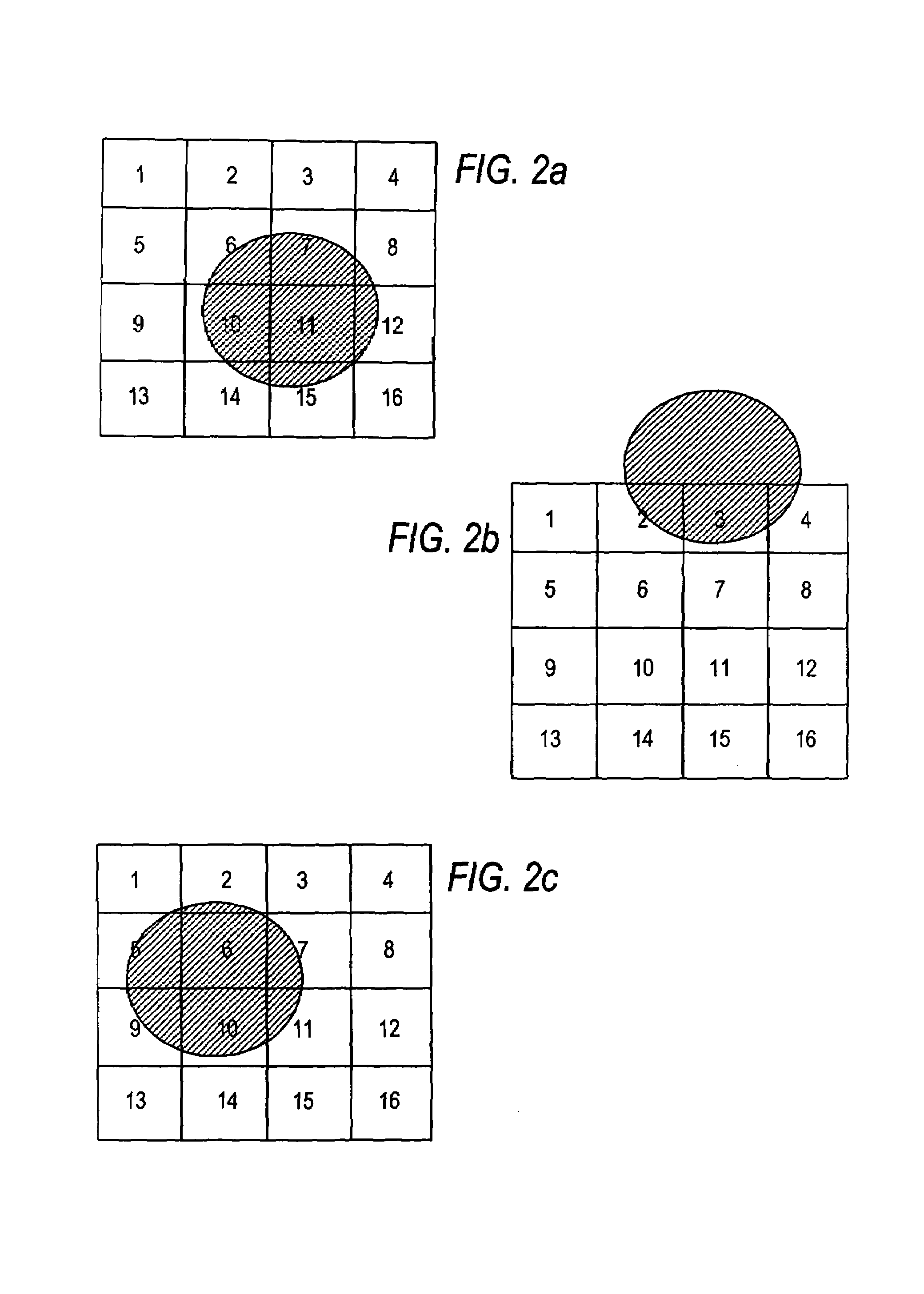Method for automatic determination of validity or invalidity of input from a keyboard or a keypad
a technology of automatic determination and input, which is applied in the direction of electric digital data processing, printing, instruments, etc., can solve the problems of indefinite or unclear input, the size of adult fingers, and the miniaturization of the keyboard
- Summary
- Abstract
- Description
- Claims
- Application Information
AI Technical Summary
Benefits of technology
Problems solved by technology
Method used
Image
Examples
Embodiment Construction
[0037]According to the example shown in FIG. 1 the method first comprises discriminating all signals occurring at the same time. These signals must have a minimum intensity, in order to be considered. In the next step whether or not the signal is due to operation of only a single key switch is tested. If that is the situation, i.e. “yes”, then this key switch is considered the principal key switch.
[0038]If the signal, on the other hand, comprises a plurality of individual key signals or signal components due to operation of different keys at the same time, whether or not this combined signal, and / or the activated key combination producing it, can be correlated with an unambiguous or well-defined principal key-nearest neighbor key relationship is tested. If the answer to this test is “yes”, then the principal key is unambiguously established and operation of this principal key is valid.
[0039]If no well-defined or unambigous principal key-nearest neighbor relationship is established d...
PUM
 Login to View More
Login to View More Abstract
Description
Claims
Application Information
 Login to View More
Login to View More - R&D
- Intellectual Property
- Life Sciences
- Materials
- Tech Scout
- Unparalleled Data Quality
- Higher Quality Content
- 60% Fewer Hallucinations
Browse by: Latest US Patents, China's latest patents, Technical Efficacy Thesaurus, Application Domain, Technology Topic, Popular Technical Reports.
© 2025 PatSnap. All rights reserved.Legal|Privacy policy|Modern Slavery Act Transparency Statement|Sitemap|About US| Contact US: help@patsnap.com



